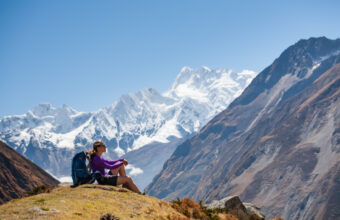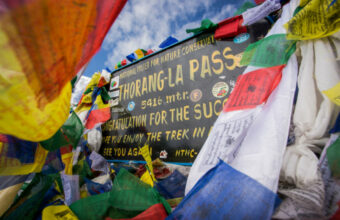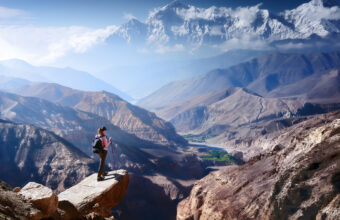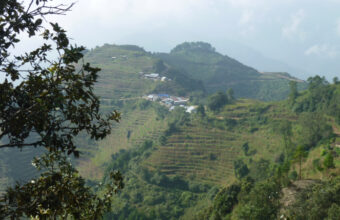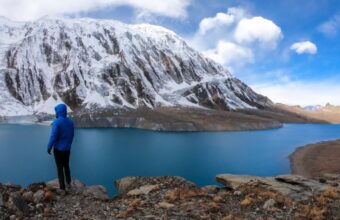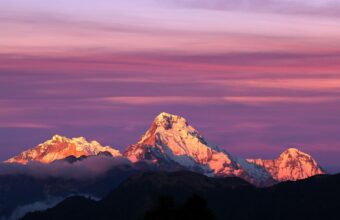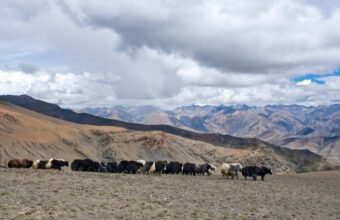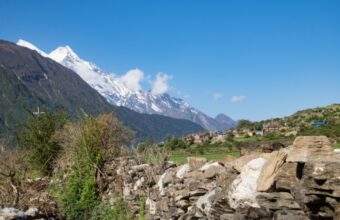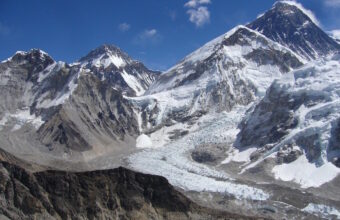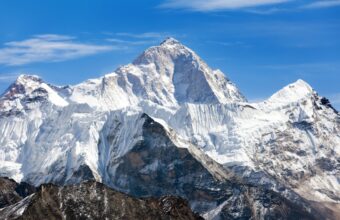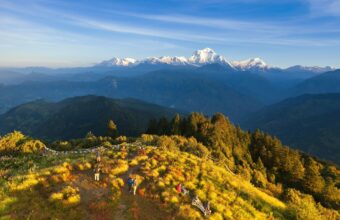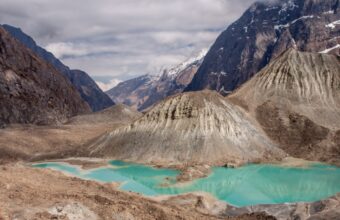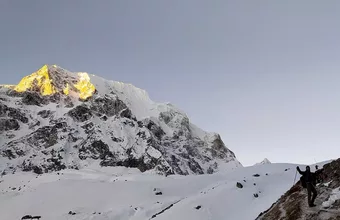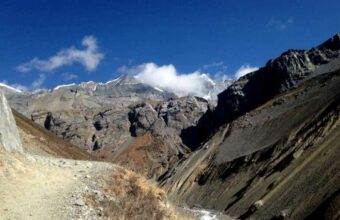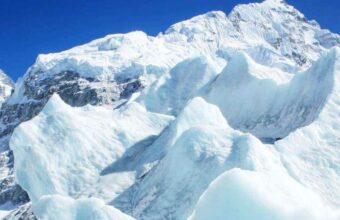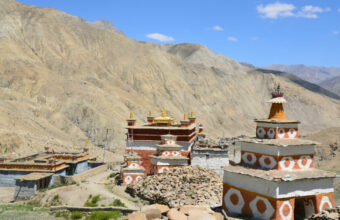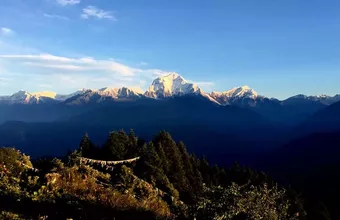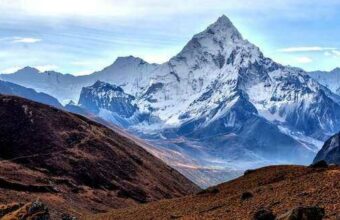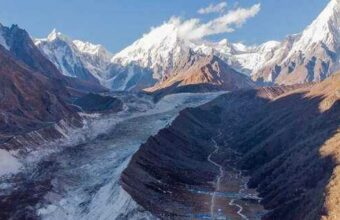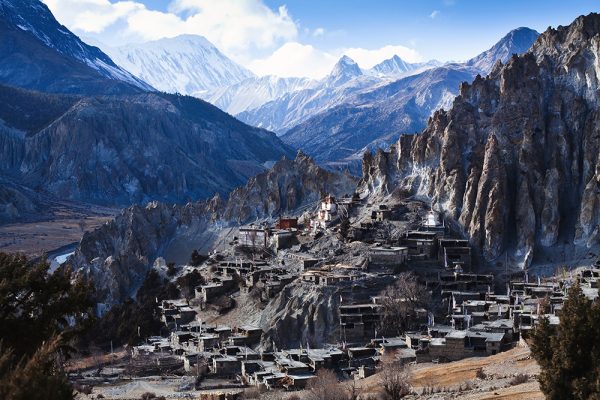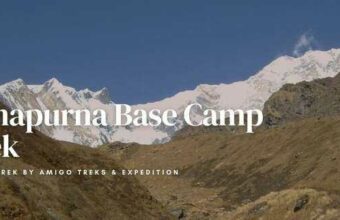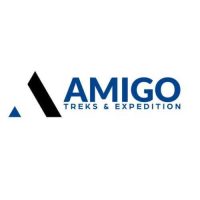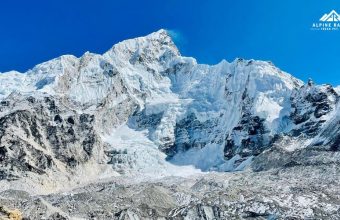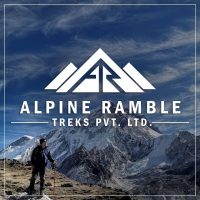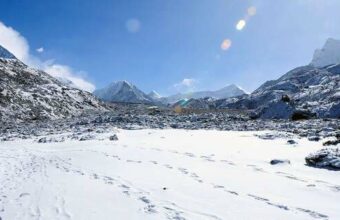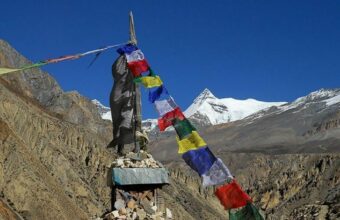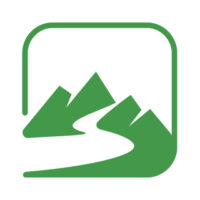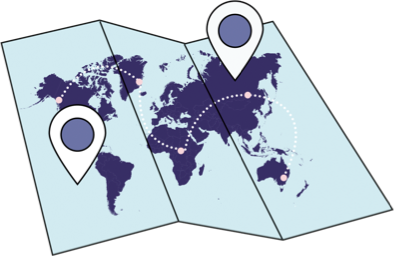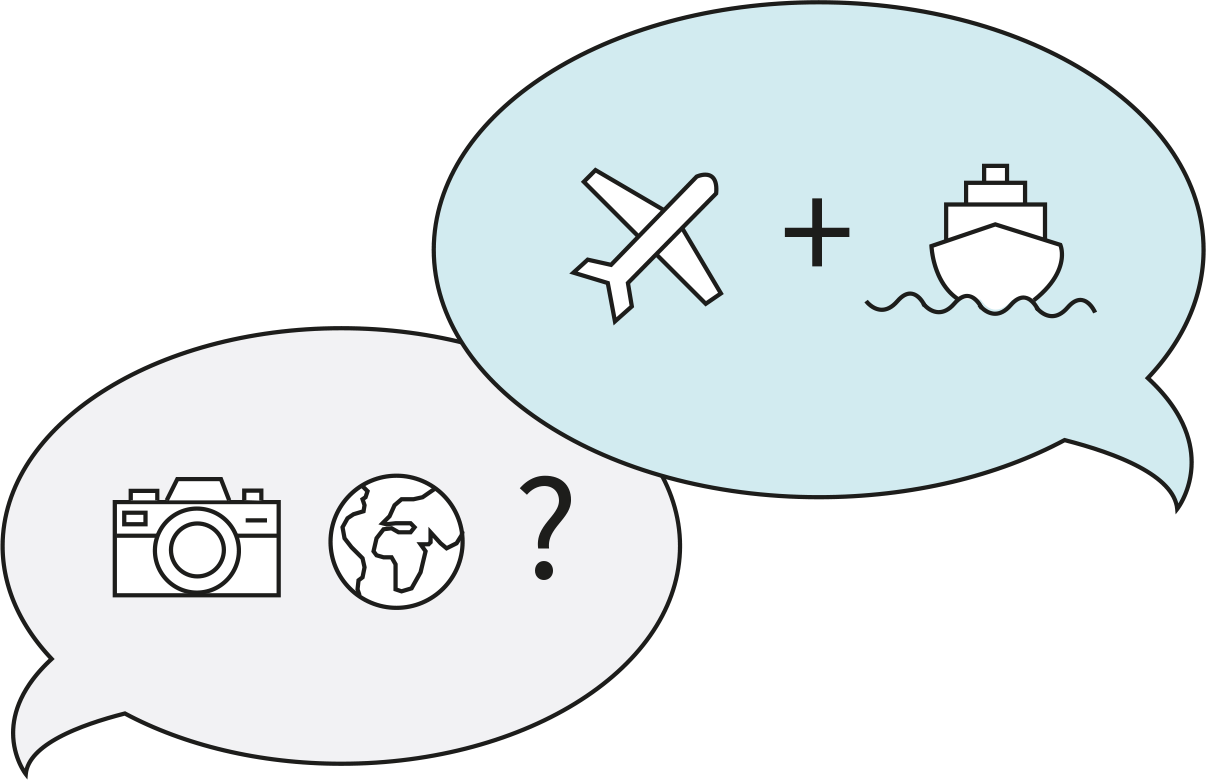Trekking in Nepal
Everything you need to know about Nepal trekking
I've been trekking in Nepal for over thirty years as as a travel journalist and guidebook author. Over the years I've visited every corner of this magnificent country to seek out the treks and hikes that don't make all the bog standard Top 10 lists.
I've learned what the Nepal trekking industry gets right – and what it sometimes gets wrong. In this guide I'll explain my favourite places to go trekking in Nepal, the best Nepal treks, and all my insider tips you need to know before you book. Let's go!
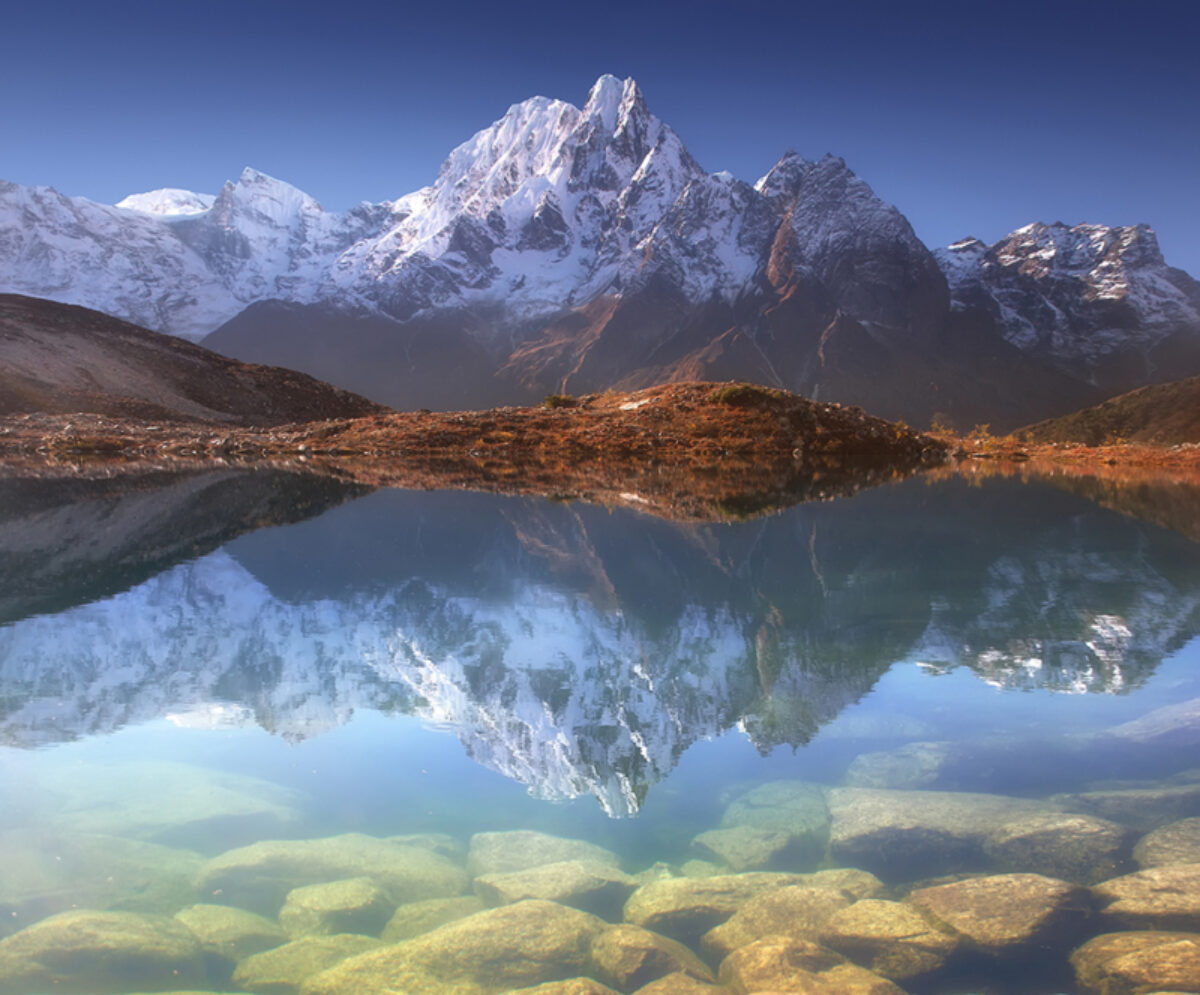
Glorious scenery in the Manaslu region, sometimes dubbed the "next Annapurna"
The best treks in Nepal
Nepal trekking highlights – and some lesser-known gems
Do an online search for the best treks in Nepal and you'll be confronted with pages and pages of the obvious big-hitters: Annapurna Circuit, Everest Basecamp, and so on. Sadly, the Nepal trekking industry is not immune to mass tourism's preference to promote the easy-selling best hits. After three decades of trekking in Nepal I can certainly understand the allure of the blockbuster hikes, but I'd strongly urge you to consider some of the numerous alternatives.
-
Manaslu region
-
Annapurna Region
-
Upper Mustang
-
Langtang Valley
-
Annapurna Region
-
Annapurna Region
-
Dolpo region
-
Manaslu region
-
Kanchenjunga
-
Khumbu (Everest) Region
-
Makalu
-
Langtang Valley
-
Annapurna Region
-
Khumbu (Everest) Region
-
Annapurna Region
Where to go trekking in Nepal
Nepal trekking hotspots, and some hidden gems
The mainstream Nepal trekking industry wants you to focus on the already-popular best sellers like Everest (Khumbu) and Annapurna. There's no question both offer some world-class trekking, but in my experience there's so much more to hiking in Nepal. Here's a rundown of my personal favourites:
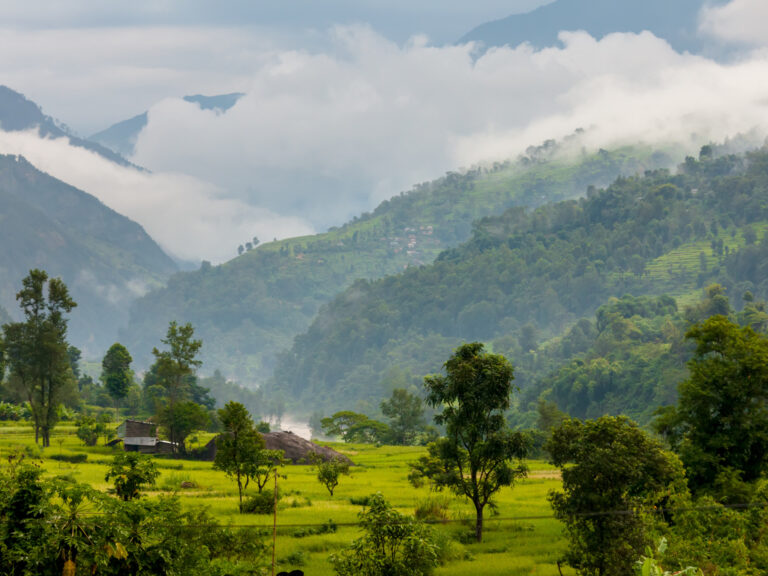
Manaslu region
Manaslu: the new Annapurna
When people ask me for my most recommended trek, my usual answer is the Manaslu Circuit. It's arguably one of – if not the – best trek in the country; competing with Annapurna and Everest for the crown of amazing scenery and epic hiking but with a fraction of the crowds.
There are trekking lodges all along the standard routes in Manaslu but for now, they are a lot more primitive than those on the Everest and Annapurna treks. Getting to the trailheads in this area is easy and cheap with frequent public transport from Kathmandu and Pokhara.
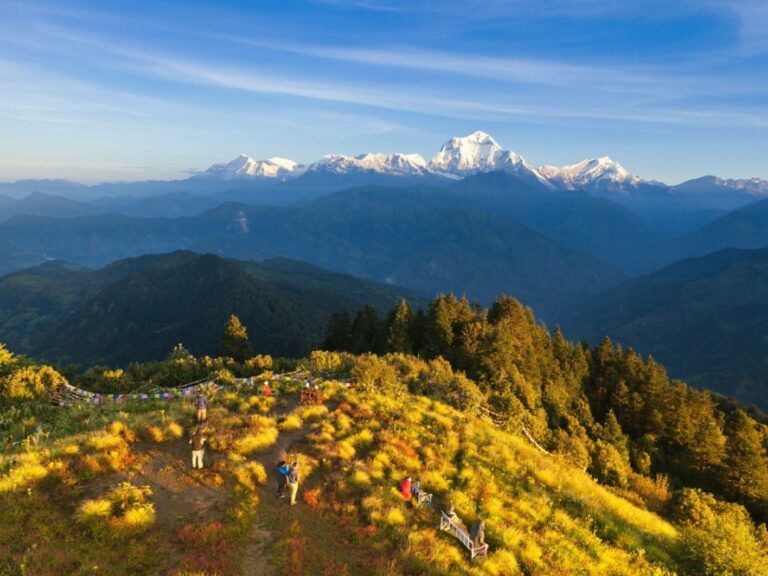
Annapurna Region
Avoid the crowds (and roads) in Annapurna
The famed Annapurna range is one of the great trekking regions of the world, and for a very good reason: The mountain scenery here is guaranteed to blow you away. Standing in the heart of the cirque at the end of the Annapurna Sanctuary could move you to tears, and the wilderness around Tilicho Lake will probably be the best mountain scenery you’ll ever lay eyes on.
The inevitable downside: it's popular and busy, especially during high season. If crowds and communal teahouse lodges aren't your thing, look elsewhere. Trekking culture is changing fast, too. The end of independent trekking and road construction are changing the face of the region, and not always for the better.
Read more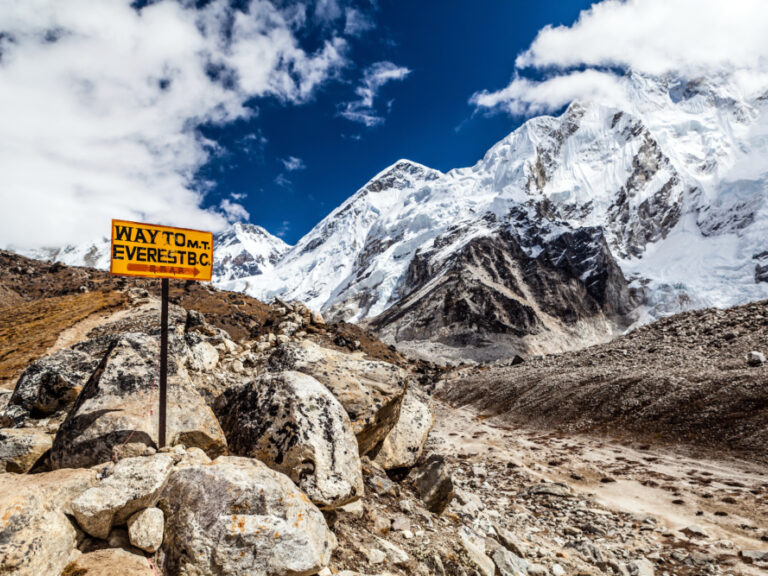
Khumbu (Everest) Region
Everest for ultimate bragging rights
Mt Everest, (8,848m) the highest mountain on Earth, exerts a magnetic pull on trekkers, mountaineers and armchair adventurers alike. The main trekking routes around Mount Everest – most obviously Everest Basecamp (EBC) – can be busy and over commercialised, but for sheer awe nothing comes close to the trails threading through the Khumbu, the area around Everest.
Most Nepal trekking first timers will be coming for Everest Base Camp and I wouldn't begrudge them a thing. But for my money, the best trek in this region is the Gokyo Lakes trek: with scenery every bit as spectacular as that on the Everest base camp trek but with far fewer crowds, this trek, which leads to a series of high glacial blue lakes, is arguably one of the best in Nepal.
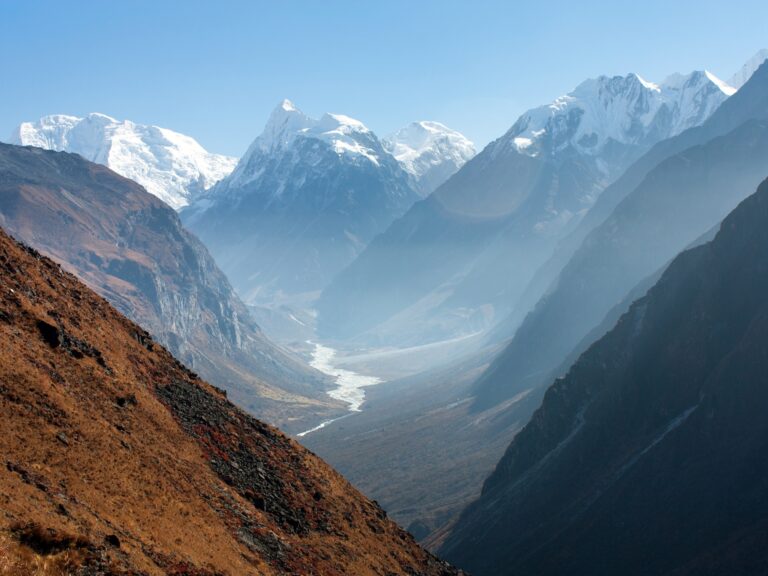
Langtang Valley
Langtang for accessible treks
Often visible from Kathmandu city centre, the Langtang range offers the most accessible trekking in Nepal. If the city pollution and traffic wasn’t so off-putting, you could start walking from your guesthouse straight to the mountains.
This accessibility, easy-to-follow trails and lots of lodges has meant the Langtang Valley has always been, alongside Everest and Annapurna, one of the big three trekking areas.
The basic Langtang Valley hike takes eight days including travel time from Kathmandu, but add in another couple of days for side trips from Kanjin Gompa: this small village might be the official end point of the Langtang Valley trek but in truth this is where the fun really starts. Numerous day and overnight trips fan out from the village. You can make the almost obligatory hike up to the Kyanjin Ri viewpoint (4,600m) for sensational views, or have a rollicking day’s adventure to the glaciers and yak pastures of the Lirung Valley.
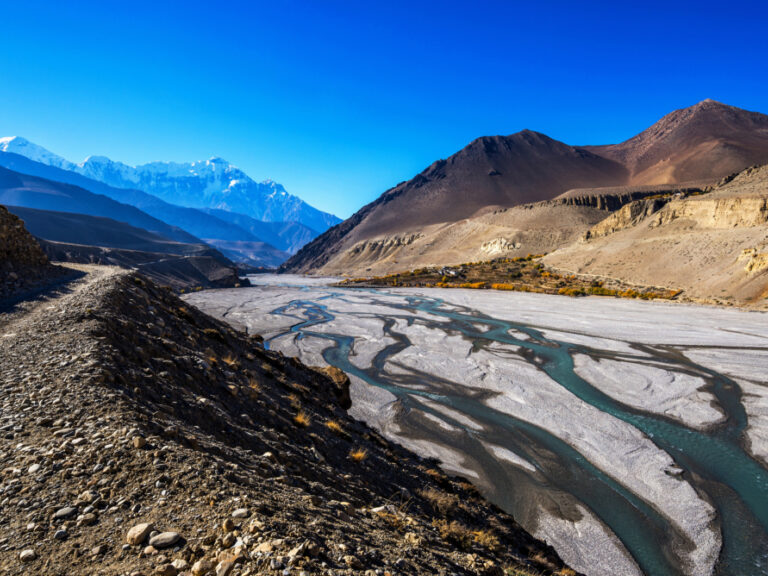
Upper Mustang
Upper Mustang for cultural discovery
North, beyond the highest Himalayan peaks, is Upper Mustang. This is a high-altitude desert of multi-hued gorges, green oases, fairy-tale gompas, prayer flags and blood red fortified monasteries. This is a land so rich in traditional Tibetan Buddhist culture that it can often feel more classically Tibetan than the modern Chinese region of Tibet itself.
Mustang doesn’t have the same awe-inspiring close-up views of the mountains as many of the other main Nepalese trek areas, and walking here is as much a cultural experience as a mountain one. With classical Tibetan Buddhist culture severely restricted in Tibet itself, Upper Mustang is now one of the best places to see it flourishing. But take note: Traditional life is changing here too, thanks to increased road construction and development.
Read more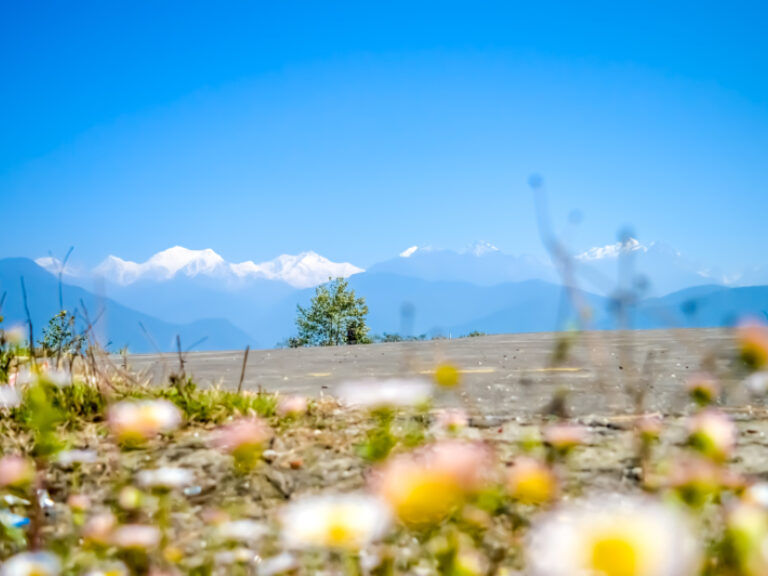
Kanchenjunga
Kanchenjunga for remote expeditions
Way out in the east of Nepal a wall of rock and ice rises up over eight and half kilometres into the sky. This is Kanchenjunga and at 8,586m it’s the third highest mountain on Earth. The hike to the base camp of this daunting peak is one of the most exciting treks in Nepal.
Over a couple of weeks you pass through pretty farming villages with terraced hillsides, through sub-tropical river valleys and misty, old-growth coniferous forests, and then across Alpine tundra until you come face-to-face with the glaciers and fluted peaks of the Kanchenjunga massif.
As a trekking destination, Kanchenjunga is little known and the number of visitors tiny compared to the numbers who pace the Everest and Annapurna trails. It’s this peace and quiet that is perhaps its biggest draw.
The distance from Kathmandu and the unrelenting up and down terrain means that very few people trek out here, although it is becoming more popular. Between October and November and March to April, very basic herders’ teahouses and village homestays are available along most of the route. At other times, most tend to be closed and you will need to be fully self-sufficient with camping gear and food.
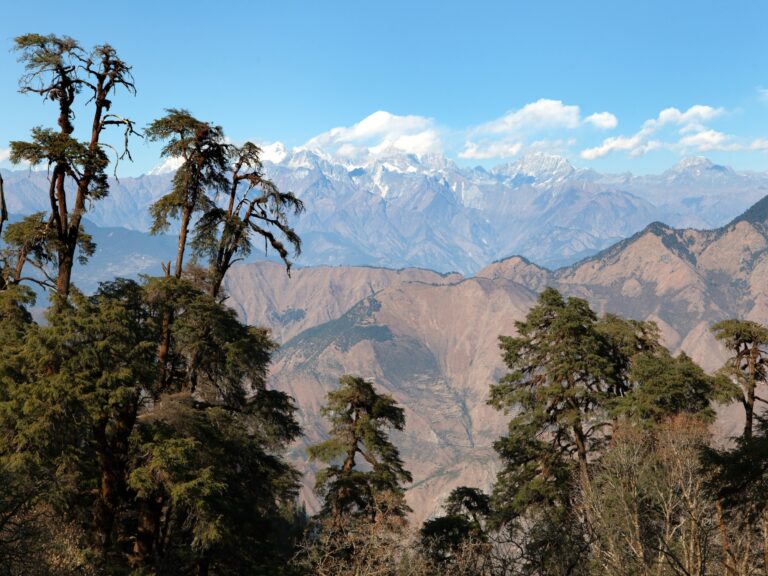
Far West Nepal
Off the beaten path in Far Western Nepal
In terms of development, the far west of Nepal comes at the bottom of almost every list, but for adventure and wonder, the region is near the top of the class. This is a landscape of deep, dank forests, sparkling sheets of water, lonely ice and snow-covered mountains, narrow canyons and ancient villages.
Just entering a village out here is a cue for a memorable cultural exchange. So few trekkers come here that people will fall over themselves to try to talk to you and invite you into their homes for a restoring cup of tea. Accept these invitations with gratitude. They’ll make for some of your fondest trekking memories.
On the Rara Lake trek, the focus isn’t so much on the high mountains (though these are always the backdrop), but rather on unhurried village life and the variety of ethnic groups found along the way. The thick forests that surround the lake provide a home to musk deer, black bears and other wildlife. The area around the lake is a national park with few signs of human habitation and there are some delightful wild camping spots. This is a genuine wilderness trek.
Note: For a trekker, western Nepal offers many challenges and logistical nightmares, but the payback is a vast swathe of untouched mountainous country waiting to be explored. You need patience and to be on a fully supported camping trek, but if you’re looking for something truly different then the far west of Nepal will probably suit.
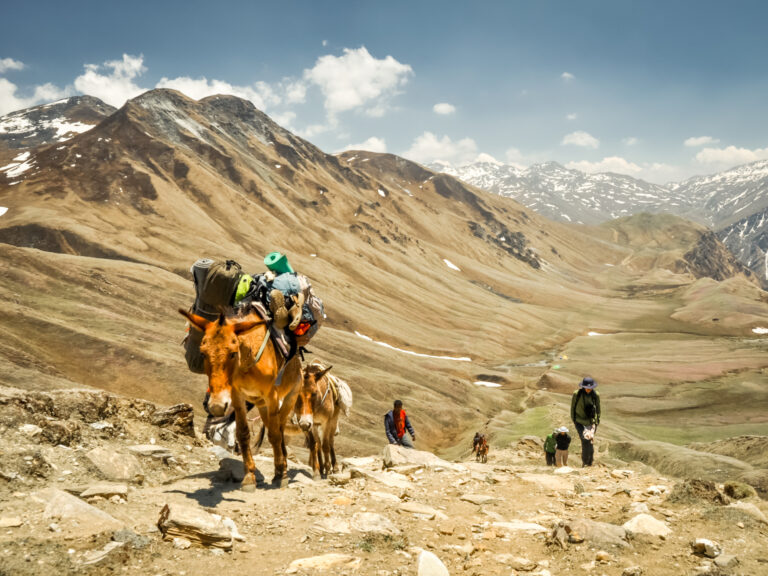
Dolpo region
Dolpo for a challenge
A vast and little-known area of western Nepal, Dolpo is a magical region of frozen desert, piercing blue skies and unnamed peaks. There are hidden monasteries stashed with treasures, yak caravans passing along the old salt trade routes to Tibet, high passes where the air is so thin it pierces the lungs, snow leopard tracks and stone walled villages seeming to blend into the mountain slopes.
Perhaps no other region in Nepal offers such scope for wild adventure as Dolpo. Few foreigners walk the trails here and in many cases there’s still a sense of blazing your own routes — especially when undertaking the epic month-long walk from Dolpo to Jomsom (or Upper Mustang) along the roof of Nepal.
Here, time is measured by the ripening of crops and the arrival of the first snows. You won’t find any trekking lodges, apple pies or crowded passes, but you will find scenery to make you gasp and people welcoming you with open arms.
There are, however, a few things to remember. Getting there, nearly always by small twin-prop plane, is difficult, expensive and unreliable. Most of the walks are demanding, long and high with no creature comforts and must be undertaken with an organised camping group. Lastly, permits are complicated and expensive to obtain. But if you have the stamina, patience and finances, Dolpo will leave you enchanted.
Among my favourite highlights in the Dolpo region are Phoksundo Lake, Nepal’s most beautiful lake and the valley of Do Tarap where time really seems to have stood still.
Read more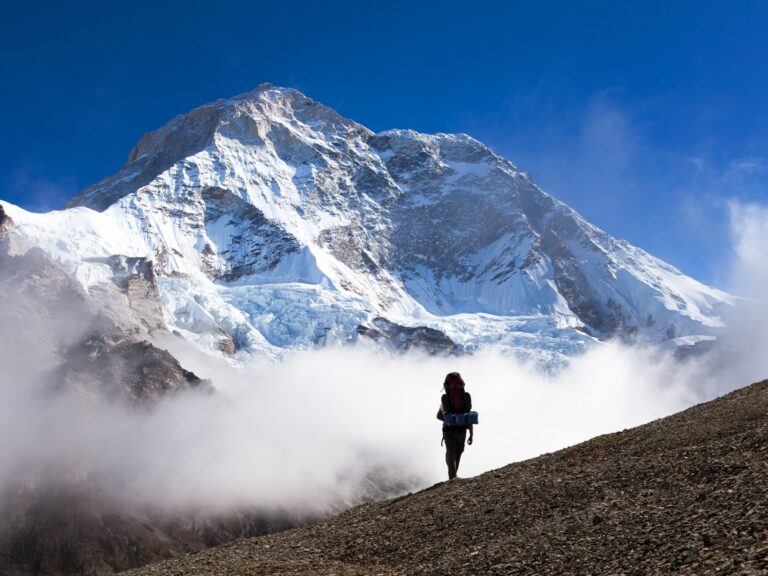
Makalu
Makalu for untouched views
One of the great forgotten trekking routes of Nepal, the strenuous two-week march straight to the base camp of the world’s fifth-highest mountain, the daunting Mt Makalu (8,463m) will delight those who revel in tranquil mountain trails, a sense of being off the beaten path and, most importantly, awesome mountain views.
The name Makalu is derived from the Sanskrit, Maha Kala, which is a name for the Hindu God Shiva. When you stand at base camp and stare up at Makalu you could feel as if you’re in the presence of the gods.
A combination of logistical problems, the difficulty of the trekking and the lack of side routes and connecting trails means that only a few hardy groups come out this way. Most leave with the smug smile of people who’ve just experienced the magic of an older, more dramatic corner of Nepal. This is definitely a trek for the discerning walker.
Almost all of the (very few) people who trek Makalu take a simple up and down route along the same path. For those with plenty of time and stamina, and who are very well-equipped with a full, experienced expedition-style support team, there are wildly exciting treks to Kanchenjunga or even Everest.
Read moreTrekking in Nepal: Need to know
Our expert's top tips on planning a Nepal trek
How to avoid the crowds
Most first time trekkers in Nepal flock to either Khumbu (Everest) or the Annapurna regions. If you’re looking for a quieter and more ‘authentic’ experience, I’d recommend without hesitation the Manaslu Circuit. Facilities are more basic than in Annapurna and Everest but otherwise this one really has it all: stupendous mountain scenery, fascinating and varied village life and challenging walking.
Don't skimp on the price
The Nepal trekking industry is plagued with an oversupply problem – there seem to be more trekking operators than actual trekkers, which puts immense downward pressure on prices. This might seem like a good thing for you, but when you see a 12 day EBC trek for $800 it means corners are being cut somewhere, usually in the pay and quality (and therefore safety and wellbeing) of ground staff. Personally I always recommend booking with a Nepal based and owned operator, but do plenty of homework first. Look for operators who’ve been established a long time, with plenty of coverage in guidebooks and plenty of genuine customer testimonials. If you're booking with an international operator, try to ask who is doing their ground operations and vet them accordingly. Nepal is definitely somewhere you want to be as much of a responsible traveller as possible.
On the point of booking with a Nepal based operator, one thing I strongly advise against is booking anything with any so-called guides you meet on the street or in a taxi.
How trekking in Nepal works
It remains to be seen how the new rules banning independent trekking will be enforced, but for the time being it appears that all treks outside of the Everest (Khumbu) region must be pre-organised and accompanied by a licensed guide, either in a group or a private tour.
Teahouse treks
Regardless if they’re independent or guided, treks to the more popular regions such as Everest, Annapurna and Langtang typically use teahouses (trekking lodges) for accommodation.
In Everest and Annapurna, teahouses can get surprisingly luxurious – some now boast hot showers, varied menus and even wifi. But the standard experience is fairly rustic, although warmer and more comfortable than tents! There may not be hot water, you’ll probably be sharing a room, partition walls are very thin and you will be woken around dawn by other trekkers preparing to head out early. With everyone trying to leave at around the same time, there will be a wait for breakfast and for the shared bathrooms and toilets. Most people are on their way by 8.30am and will walk until around noon.
Lunch is taken at another trekking lodge and again there can be quite a wait for food. Another couple of hours’ walk normally follows after lunch before arriving at your night stop. There’s often time to explore the village and the area before gathering round the heater in the dining room for dinner, swapping stories and sharing experiences. Most people head to their often draughty wooden rooms by 8 or 9pm.
Camping treks
Organised trekking tours, or treks to more remote regions, tend to be camping, or a mixture of camping and homestays and/or teahouses.
In my opinion, the biggest advantage of a guided camping trek is that it gets you away from the busy lodges and into huge swathes of upland Nepal that teahouse trekking simply cannot reach. You can explore for longer in the more remote and, dare I say it, more exciting areas of Nepal.
Life on a camping trek starts at first light with a reviving cup of tea brought to you in bed. Often, you’ll also be brought a bowl of hot water and a flannel to wash. Breakfast will be served half an hour or so later and while you tuck into steaming bowls of tsampa (delicious Tibetan porridge) the camp staff will pack away the tents and gear.
You’ll then walk until lunchtime. The kitchen staff and porters will normally have reached the lunch stop long before you. A hot drink will be waiting followed by a big lunch. After walking for another couple of hours you’ll normally arrive at the night stop by mid to late afternoon. Tents will have been erected and a cup of tea and biscuits or other snacks will be ready for your arrival. A big dinner will be served shortly after nightfall and then it’s an early night.
Depending on the size of your group and the level of luxury you opted for, it’s common to sleep in small two-man tents and to eat in a larger, communal dining tent. Normally there will be tables and chairs and sometimes a toilet tent as well. If you’ve tried to keep costs down you might not have these luxuries.
It’s not all camping though. Even on the more remote routes there is a growing number of wonderfully atmospheric homestays – Upper Mustang is especially good for this – and very basic trekking lodges aimed more at local herders. The Kanchenjunga trails are well endowed with these. It’s possible to tell your trekking company that you want to mix it up a bit with a combination of homestays, camping and basic trekking lodges. This gives you the best of all worlds.
When to go
October to April is the dry season and, overall, this is the best time to trek in most of Nepal. But within that, the ideal trekking time is really from October to early November when the skies are crystal clear and the visibility excellent. It’s warm in the valleys and cool to cold up high. However, this is also the busiest time on the main trails, and villages can be overwhelmed with trekkers.
In general avoid the monsoon season from May to September, when many trekking routes close and paths become dangerous. However, for some regions, such as Upper Mustang and Dolpo, this is actually a good time to trek.
Staying safe while trekking in Nepal
Trekking in the mountains of Nepal generally presents few health problems bar those of altitude and weather. Food poisoning and other tummy troubles aren’t as big an issue as they are in Kathmandu, Pokhara and the Terai lowlands. Be careful what you eat in those areas before going on a trek. The last thing you want is to start walking with a dodgy stomach.
Malaria and dengue fever, both of which are present in the Terai lowlands, are non-existent in the mountains. However, it’s important to be aware of problems brought on by altitude, or from getting too cold or hot.
Fitness and preparation
Many people worry that they won’t be fit and strong enough to trek in the Himalaya. In reality only moderate fitness is required on most of the standard trails (especially those open to independent trekkers). However, for a first time trek, it's best not to take on anything too long, high, or remote.
The more pre-departure training you can do the better, but aim to be comfortable walking several hours a day. Those short of fitness should opt for shorter and easier treks, and start walking at first light in order to give the maximum amount of daylight to cover the day’s walk.
Remember to break in new boots at home before using them on any trek.
Acute Mountain Sickness (AMS)
By far the biggest threat in the higher (above about 3,000m) routes in Nepal is altitude sickness, or Acute Mountain Sickness (AMS). This potentially fatal condition is caused by a combination of reduced oxygen and lower atmospheric pressure reacting with the body.
Almost everyone who treks above 3,000m will get very mild symptoms, such as light dizziness or headaches and difficulty sleeping. Normally it only lasts for a short time and is more a sign of your body adapting to the lower oxygen levels at altitude. Take it easy and drink lots of water or ginger tea, and it should pass.
If symptoms persist or get worse and a strong headache and vomiting start to occur, then it’s likely that moderate or severe altitude sickness is striking. The best thing to do is to descend to a lower elevation as fast as possible — even if it’s the middle of the night. A porter might have to be hired to help get the victim down the mountain fast. Ignoring AMS can quickly lead to severe problems and even death.
It’s not clear how or why AMS strikes. There have been cases of Sherpas who climbed Everest a number of times but got severe AMS at just 3,500m. And it doesn’t necessarily strike the old or unfit first. There is some evidence to suggest that young people get it more commonly than older people, although that might just be because younger people are more likely to be gung-ho about climbing higher and faster than recommended.
The golden rule with high mountain trekking is to go slowly and never ascend too high, too fast. Most experts agree that above 3,000m you shouldn’t ascend more than around 300-500 m in a day and that you should allow for frequent rest days above 3,500m (a rest day doesn’t actually mean having a rest. On these days it’s wise to hike to a higher altitude and then descend back down again to sleep). Following these simple rules will greatly reduce the chances of AMS.
Hypothermia
Hypothermia is not as common as you might expect on a Nepal trek but it’s certainly a risk for the under-dressed and unprepared. Symptoms are pretty similar to those of AMS with slurred speech, loss of concentration and fatigue all being key signs. Get the victim into a warm place, wrap them in sleeping bags and use your own body heat if necessary, and give them hot drinks and food.
Sunstroke and heat stroke
Sunstroke and heat stroke are both common, especially when walking all day in bright sunlight through the hotter, lower valleys and slopes. At such times try to rest in the shade, drink lots of water, eat something salty and wear a wide-brimmed hat.
Water and sanitation
The golden rule anywhere in Nepal is do NOT drink tap water without treating it first. The vast majority of trekkers carry packets of water purification tablets to treat their drinking water. In the Annapurna area many lodges have vats of pre-treated water and for a nominal fee you can fill up your own water bottles. Buying bottles of drinking water as you go is terrible for the environment at the best of times, but up in the Nepalese mountains with few recycling facilities it’s even worse.
Don’t expect much opportunity to wash while trekking. Showers, when available, are often cold which ain’t a lot of fun in the snow at 4,000m. On more popular routes hot, solar heated showers are sometimes available, but most people just wait until they get back to Kathmandu.
Air quality
It's also worth knowing that the air pollution in Kathmandu can be so bad that you’re liable to get a chest infection if you spend more than a couple of days walking around the city, which isn't a nice start to a trek. Many locals and tourists wear face masks while walking Kathmandu streets in order to counter this pollution. Asthmatics should be especially cautious.
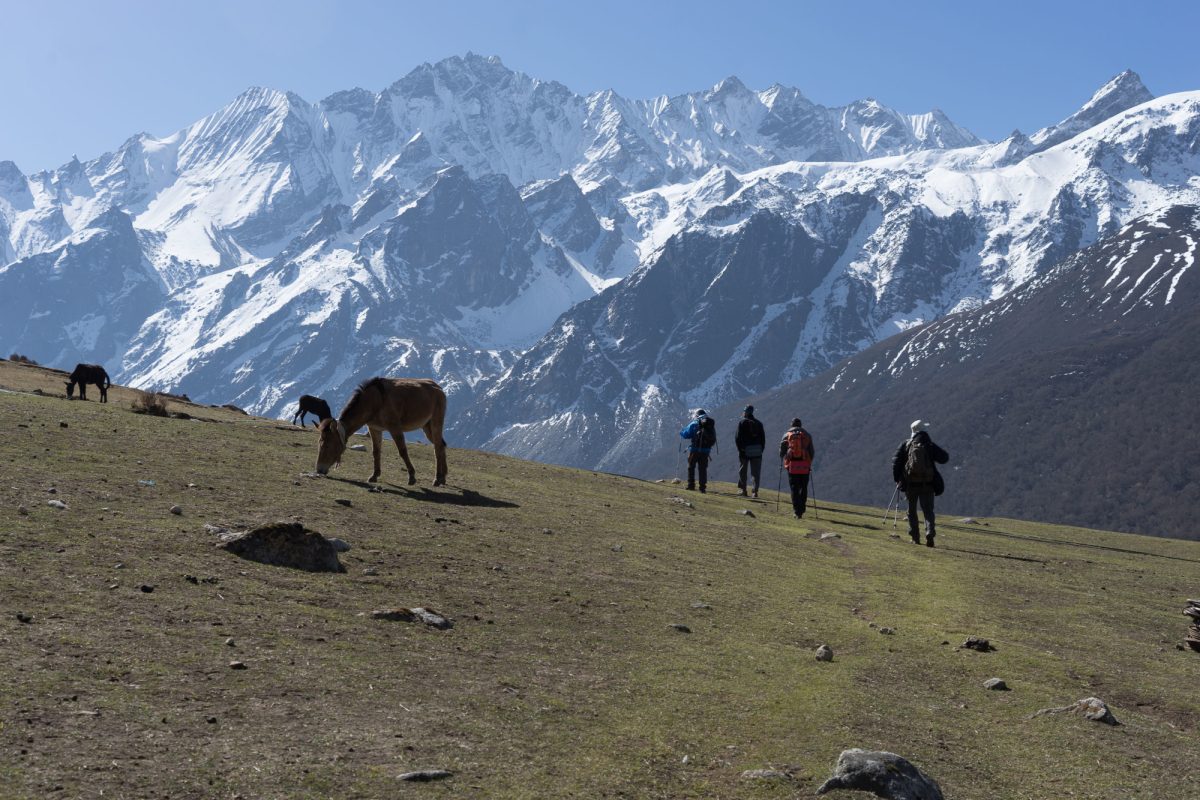
The Langtang Valley, just a stone's throw from the chaos of Kathmandu
Trekking in Nepal: FAQs
Your questions, our expert answers
Question
For a first trekking experience in Nepal, would you recommend Upper Mustang, Annapurna, or Dolpo?
Answer
Tough question, it very much depends!
Firstly it depends on when you're going: Both Upper Mustang and Dolpo are best trekked between May and October. On the other hand, the Annapurna treks are best done between October and May.
Secondly it depends on what you're looking for. The Annapurna region is the classic Nepal trekking experience: You'll get the iconic close-up mountain views, lodge/teahouse trekking is standard, it's considerably cheaper, but also much, much busier.
Upper Mustang and Dolpo are totally different. The culture and landscapes here are more Tibetan and the scenery is less in-your-face-mountains, and more stark, high-altitude desert. They're both vastly less popular than Annapurna, travel logistics are more complex and more expensive, and you'll either be camping or in basic homestays.
If you're an experienced trekker looking for something totally different, I'd recommend Upper Mustang or Dolpo over Annapurna. And of the two I'd probably recommend the eastern side of Upper Mustang. There's quite a lot of road building taking place in Dolpo right now but on the eastern side, Upper Mustang is still classic Tibet scenery and culture.
Question
I'm a solo mum with two 10 year old daughters who are keen hikers. Would Nepal be okay for us, and where would you recommend?
Answer
I have two children (now aged 13 and 10) and wouldn't hesitate to take two ten year old girls to Nepal trekking if they already have some walking experience.
If you and your children are used to hiking in mountain areas with decent height gains, they can hike in Nepal.
There's very little in the way of wilderness trekking on all the main trails as there are villages everywhere.
It would be a rare day that you'd have to gain more than about 500m in elevation gain and most days are around five hours walking (without stops).
The main difficulty lies in altitude and cold temperatures. With younger children I would be cautious about doing anything too high - say above 4,000m - just in case they don't think to tell you that they're feeling ill.
The cold is also a problem so take plenty of warm gear as lodges are unheated and at night it gets bitterly cold. In the day the temperature is normally pleasant or even warm.
As for particular treks with children then I would say the best are the Langtang Valley trek with a few days at Kanjin Gompa to explore the upper valley as this is a short trek, with beautiful scenery, decent enough lodges and only goes to 4,000m.
Annapurna Basecamp is another good - but longer - hike to a similar altitude and with better lodges. The Tamang Heritage Trail is also good as it doesn't go too high at all but there has been quite a lot of road construction there. The Rolwaling Valley is a newer, quieter trek that is a nice length and only goes to 4,000m. Lodges are still pretty basic.
And then there's Poon Hill but it doesn't really take you into the mountains and probably won't seem too exciting if you already have mountain experience.
Question
Can you recommend quieter alternatives to Everest or Annapurna?
Answer
Everest, Annapurna and to some extent Langtang are the favourites for first-timers. These three regions are convenient with easy access, plenty of lodges and good facilities. However, during the 'peak seasons' of mid-March to mid-May & October to November, these regions get very busy indeed.
My personal advice for someone looking for a quieter experience is to look at either the Manaslu or Kanchenjunga regions. The Manaslu Circuit trek has been hailed the "new Annapurna Circuit" and Kanchenjunga North offers some of the best views you'll get without straying into actual mountaineering. Until a decade ago trekking here used to be a full scale, high-cost camping expedition. These days there are some lodges on the routes but still far fewer trekkers, which makes them attractive if you're looking for true wilderness, unspoiled culture and quiet views.
Nothing takes away from the beauty of Everest or Annapurna, but for a different experience, Manaslu or Kanchenjunga get my vote.
Question
Can you recommend any short duration Nepal treks?
Answer
If you have eight days you can have a wonderful time trekking up the Langtang Valley. You won't see Everest but you will see a lot of stunning mountain scenery. You'd need a day each way for travel to/from Kathmandu then minimum of three days walking up the valley and two days down (these are long days and altitude sickness is a possibility) and then just one day up at the head of the valley.
Just make sure you don't rush and give yourself plenty of time to acclimatise.
Question
Is there a short – 4 or 5 day – trek with views of Mt Everest?
Answer
Some Nepal trekking operators market a short four or five day trek from where you might get a very distant and totally unrewarding view of Mt Everest.
On these treks you fly into Lukla and then walk to Namche (arriving there on day two), then along the trail towards Dingboche for a couple of hours from where, on clear days, you can just about see Mt Everest. You'd then walk back to Namche and then, in one long day, all the way back to Lukla for a flight back out the following day.
Take into account flight delays and you'd be lucky to do it in four days. It's technically possible, just not remotely worth it in my opinion.
If you wanted to get up to Everest Basecamp and there were no hiccups with flights in and out of Lukla (which happens all the time) then you'd need at least ten days. This is the minimum safe amount of time to do it in and in that time frame you'd still run a real risk of altitude sickness.
If it's views of Everest you're after, there are some view points on the edge of the Kathmandu valley where you can spend the night in one of the villages there and at dawn on a clear day stand on your hotel balcony and see a distant smudge of Mt Everest.
Here's my advice: there's much more to trekking in Nepal than just seeing Everest. Please choose a route that is safe, gives you time to properly acclimatise, and doesn't rush through this magnificent country just to tick off a bucketlist item.
Question
Is trekking in Nepal safe?
Answer
This is the most common question I get asked! By and large trekking in Nepal is a safe, well-regulated industry. Mishaps and even deaths do happen, typically in the single digits per year. But (reputable) operators employ top quality professionals and have thorough risk-management processes in place. Should something go wrong, evacuation is usually straightforward if expensive (insurance is always mandatory).
That said, you must be aware of the very real health risks, such as Acute Mountain Sickness (AMS), sun/heatstroke, hypothermia, and general stomach issues.
The golden rule with high mountain trekking is to go slowly and never ascend too high, too fast. Most experts agree that above 3,000m you shouldn’t ascend more than around 300 to 500m in a day and that you should allow for frequent rest days above 3,500m.
There are also infrequent but frustrating reports of petty theft in the busier teahouses. Don’t trek with valuables and keep a keen eye on your possessions.
Question
Is Nepal safe for solo female travellers?
Answer
The country’s conservative but welcoming culture makes Nepal a generally safe country for solo female travellers. You’re unlikely to encounter the sort of harassment or unwelcome attention that can blight visits to, for example, neighbouring India. Honestly, you're more likely to receive unwelcome attention from other foreign trekkers than Nepalis.
Question
Can you trek without a guide in Nepal?
Answer
In April 2023 the Nepalese Tourist Board announced that guides would be mandatory for all trekkers hiking within a national park (which accounts for pretty much all the main trekking regions), except for people trekking in the Everest region. When it came down to it though the rule was not enforced due to local opposition. However, in June 2023 the tourist board again insisted on compulsory guides and increased fines for those not respecting the rules. It won’t be known how strictly the rule is enforced until the trekking season recommences after the monsoon in October 2023.
From my personal experience a guide is not only handy for route finding but serves the vital role of being a language and cultural translator and can open doors to experiences, sights and encounters that might otherwise pass you by. A good guide can also be very useful for showing interesting and little known side routes.
Question
Is there still an option for independent trekking in the Annapurna area or do you have to have a licensed guide?
Answer
Aside from the Everest region then yes, officially, you do now need an officially recognised guide to hike inside any national park/protected area in Nepal. This would include most of the main Annapurna trails.
However, enforcement of the rule in the Annapurna region has been spotty so far. There are plans (in theory at least) to start enforcing the new rule in 2024.
I would say though that a guide is just a good idea anyway because a good guide (and getting a good one is key) will enhance your trek by giving background information, offering up interesting side routes, translating when required, opening cultural doors and, of course, providing a bit more safety. Not to mention that it gives much needed jobs to local people and in the big picture it costs very little.
Question
How do I find a licensed Nepal trekking guide?
Answer
As of April 2023, all trekkers must be accompanied by a licensed guide arranged through a government-registered trekking agency. Look for the green TAAN (Trekking Agencies' Association of Nepal) logo on their website, and check their credentials on the official website.
Question
How do I choose a good Nepal trekking company?
Answer
This is a good question as there are countless Nepal trekking companies and more seem to spring up every year. You might choose to book with an international travel agency or tour operator; booking with a company in your home country can offer added financial protection, at an extra cost. Note that most international operators will not be the ones actually running your trek on the ground so you're paying extra for a middle-man, which may still be a worthwhile investment if you like the extra reassurance.
If you go for a local operator, they must be registered with TAAN and they may also be registered with the Nepal Tourism Board and the Nepal Mountaineering Association (NMA). Cross check reviews on their website against 3rd party review sites, and try to pay with a credit card for financial cover.
Question
What are the difficulty levels of Nepal trekking routes?
Answer
In our guide we classify Nepal treks on a spectrum between Easy – Moderate – Strenuous – Challenging. Anything above that enters technical mountaineering territory. The grading depends on factors such as the altitude, duration, total ascents/descents, quality of trails, and standard of accommodations.
There are a small handful of truly “easy” treks, such as the Poon Hill Trek, which don’t go beyond 4,000 metres in elevation. The Annapurna Sanctuary Trek (4,130m) is easy-moderate, Annapurna Circuit and EBC are moderate-hard.
Question
Can you recommend any easier or family-friendly Nepal treks?
Answer
By and large the altitude makes trekking in Nepal a relatively challenging activity. But there are a smattering of truly beginner-friendly trekking routes. Annapurna Sanctuary is easy-to-moderate, other easier routes include Jiri/Shivalaya to Lukla, Poon Hill, Langtang Valley trek, Helambu trek, Tamang Heritage Trail and Phoksundo Lake.
Question
How much does a Nepal trek cost?
Answer
A group trekking tour in Nepal with a reputable operator will typically cost between USD $800 and $2,000+ per person, depending on the trip duration, location, route and other variables.
Organised treks are generally priced on an all-inclusive basis: virtually everything from arrival to departure will be factored into the price. This should include the services of a qualified guide and support team (assistant guides, porters, cooks, etc), all accommodation (either teahouses or camping), TIMS card and any other necessary permits, three full meals per day, all ground transfers, any internal flights, and 24/7 backup support. Certain equipment, such as sleeping bags and trekking poles, may be hired at an additional cost. Insurance will not be included, but will be a mandatory requirement.
Question
What kind of accommodation can I expect while trekking in Nepal?
Answer
Commercial organised treks use a combination of camping and ‘teahouses’, or trekking lodges. Trekking lodges range from spartan to comfortable, and even luxurious. You can expect a simple but warm twin room, a shared bathroom, and a cheap but filling breakfast and evening meal. Trekking lodges are social places, with hikers gathering around the heater at night to swap stories.
Question
What kind of food should I expect on a Nepal trek?
Answer
On an organised group trek with a quality operator you’ll be very well fed indeed – your porters and support staff will work miracles to produce three hearty meals per day. Depending on the route and accommodation you might also eat a la carte in teahouses. Staples include dhal bhat (lentil curry and rice, Nepal’s national dish), momos (Nepalese dumplings) and thukpa (noodle soup). International dishes and beer are sometimes available at a higher price.
Question
What kind of medical facilities are available?
Answer
On an organised group trek, your trekking leader will be a qualified first-aider and the support staff will be carrying basic supplies for minor medical ailments. In a more serious situation, evacuation by helicopter is relatively common and trivial – provided you’ve got insurance.
Question
What permits are required to trek in Nepal?
Answer
All trekkers in Nepal must buy a TIMS (Trekkers Information Management System) card. The idea is that it allows the authorities to know where every foreign trekker is hiking and makes you easier to trace in an emergency. There are rumours that the cards will be done away with, but for now, they can be obtained quickly, cheaply and easily, in Kathmandu or Pokhara.
The most convenient place to buy the card is at the Nepal Tourism Board office in either Kathmandu or Pokhara. Bring a copy of your passport and two passport-sized photos and be prepared to disclose your trekking route, entry and exit points and emergency contact information.
At the time of writing, individual permits cost R 2,000 per trekking route per entry, while group trekkers pay R 1,000 per person. Check the latest prices on the official Nepal tourism board website.
For the main trekking areas (Everest, Annapurna and Langtang) you'll require the relevant national park permits, which can be obtained in an hour or so in Kathmandu or Pokhara. For other treks, additional permits might be needed including Restricted Area Permits. In some cases, these permits are fairly cheap and fast to obtain (the Kanchenjunga area being a case in point), but in other areas such as Upper Mustang and Inner Dolpo they are very expensive (US$ 500 per person for 10 days and a minimum of two trekkers are required to get them).
If you’re on an organised trek your trekking agency will deal with all the required paperwork while you go sightseeing in Kathmandu. Independent trekkers will have to face Nepalese bureaucracy alone but in most cases, it’s pretty painless. You will need copies of your passport and a spare passport photo.
Unfortunately, none of the permits can be obtained at home before leaving for Nepal so it’s unlikely that you will be able to get off the plane and straight on to a bus to the trailhead. Allow at least a day to get the papers in order after you arrive.
Question
Will I need to carry cash?
Answer
Always take more cash with you than you imagine you’ll need. There are very few ATMs on any of the trekking trails (Lukla and Namche Bazar in the Everest area have the only reliable bank machines) and it’s easy to underestimate how much you’ll spend.
Banks and ATMs accept foreign cards in all larger Nepalese towns and cities. Bigger banks will change cash (dollars and euros are best). Travellers’ cheques are rarely accepted now. The best way of accessing money is from an ATM. However, it’s wise to have some emergency cash with you in US dollars or euros.
Guides and porters will expect a tip (cash) at the end of a trek. A good rule of thumb is for each member of your group to pay the equivalent of one extra day's salary to each porter and the guide for each week you trek.
Question
How difficult is trekking in Nepal?
Answer
For the most part the actual hiking in Nepal is easier than in many other mountain areas. The trails often follow old trade routes that have been used for centuries and these routes generally take the easiest option.
It’s not the amount of time you spend walking each day – or the altitude gains and losses – that can make trekking in Nepal hard work, but the often bitter cold and the very high altitude conditions that make the going tough.
Question
Will I need travel insurance to trek in Nepal?
Answer
Yes. You’d be utterly insane to go trekking in the Himalayas without a decent travel insurance policy. Make sure it covers trekking above a certain altitude and helicopter rescue.
Question
What should I pack for a Nepal trek?
Answer
My most important advice is – keep things light and minimal. When you’re slogging your way up to a mountain pass you will regret every extra kilo you’re carrying. The following is a list of recommended items, some of which are more essential than others.
Hiking boots
You’ll need boots. Not shoes or trail running shoes. Make sure they’re waterproof, very sturdy and above all, comfortable. Don’t buy a cheap pair. Make sure you break them in before leaving for Nepal. Whatever you do, don’t hire boots in Nepal as they probably won’t be up to scratch and will give you blisters. Nothing will ruin your trek more than blisters.
Winter jacket
A thick, warm, waterproof and breathable but lightweight jacket is another must. It needs to keep you warm as toast in sub-zero temperatures. These can be rented in Nepal but most are inferior knock-offs of respected brands. They’re okay for a one-off trip but if you’re likely to go mountain trekking again, it’s worth buying your own jacket.
Sleeping bag
It gets bitterly cold at night, even at comparatively low altitudes in winter, and the thin, gap-riddled walls of trekking lodge bedrooms provide little protection. Get the warmest yet lightest one you can afford. When a manufacturer says a sleeping bag can be used down to minus-10 degrees the reality is you won’t be comfortable in it below about plus-five. Aim for one that says it will keep you warm down to minus-20 or lower. A really good sleeping bag is expensive. Bags can be rented in Nepal but as with jackets, they’re very rarely of good quality.
Trekking Poles
If you’ve never trekked before then you might consider trekking poles as something that just old people use. Well trust us, if you don’t use them after a few days clambering up and down steep Himalayan slopes you’ll forever walk like an old person… Poles help save energy going up and take the strain off your legs on the way down. They also stop you falling and twisting ankles as much.
Water bottle
Take two of at least a litre each and refill whenever possible. Don’t rely on bottled mineral water. It’s often not available and it’s environmentally unfriendly, particularly up in the mountains where there’s little chance of recycling.
Water purification pills
Get enough to treat at least three litres of water a day. On more popular trekking routes some lodges provide pre-treated water but don’t rely on this always being available.
Thermals
Two or three thermal tops of different thickness and even a pair of thermal under-trousers are worth their weight in gold.
Fleeces
Two fleeces, one thin and one thick, are vital.
Walking trousers
Don’t try to skip around the Annapurna Circuit in a pair of jeans (yes, we’ve seen people try. And fail). Get some comfortable walking trousers. Two pairs should be sufficient for the longest treks.
T-shirts/shirts
Many people recommend specialist quick-dry shirts designed for trekking. However, we’ve used a combination of these and normal shirts and T-shirts and never noticed much difference. Don’t over pack. You probably won’t change your shirt more than once in a two-week trek!
Socks
Specialist hiking socks are supposed to reduce blisters and are worth buying. However, changing your socks frequently seems to reduce blisters as much as any clever equipment. Take at least three pairs for a two-week trek. Also pack a thick, warm pair of ski socks to keep warm when you arrive at camp.
Sandals
Most people appreciate being able to remove their boots at the end of the day and don some sandals (with or without thick ski socks, depending on how cold it is).
Hats
A sun hat is vital for hotter, lower elevations, and a winter hat or balaclava for up high.
Gloves
Take a thick warm pair of skiing gloves and a thin, cotton pair of under gloves. You won’t be able to use your camera or eat properly with thick gloves but you can with the thin ones, and they’ll keep your hands warm for a few minutes.
Sun glasses
An essential bit of kit at all elevations. The sun reflecting off the snow can quickly frazzle your eyes.
Suncream and sunblock
Slap on lots of sun cream no matter what the weather or elevation. Use total sunblock on lips, nose and ears.
Wash kit
Keep this minimal as you won’t get much chance to wash. A small lightweight travel towel isn’t a bad idea.
Torch
A head torch is a must.
Books
The evenings can be long. Bring a good book, not a tablet or Kindle as power sources can be erratic and batteries drain very fast at altitude. Don’t forget a guidebook. We recommend the Rough Guide to Nepal, which covers the country and gives details of the main treks. For specific trekking information try Lonely Planet’s Trekking in the Nepal Himalaya.
Camera
Even non-photographers will want photos of this stunning scenery.
Spare batteries
Bring spare torch, camera and phone batteries. Below a certain temperature and above a certain altitude (which vary from product to product), batteries drain very fast or don’t work at all. Above about 3,000m put the batteries in your sleeping bag at night to keep them warm and reduce drainage.
Snacks
A few biscuits and chocolate bars might give you the energy boost you need to get over that pass.
Backpack
To carry all this you’ll need a decent, comfortable trekking backpack. Don’t consider any other kind of bag. If you’re using a porter you’ll need a small backpack for your day gear and you’ll have to provide a bag for the porter to carry - a holdall is best.
Travel Insurance
You’d be utterly insane to go trekking in the Himalayas without a decent travel insurance policy. Make sure it covers trekking above a certain altitude and helicopter rescue.
Leave the gadgets at home
Don’t bother taking computers, tablets, etc. They get easily broken on the trail and the batteries probably won’t work at altitude. More importantly, most people don’t want to see fellow trekkers glued to their tablets in a lodge at night.
Nepal trekking resources
Further reading & information
Nepal trekking guidebooks:
Trekking in the Nepal Himalaya: Lonely Planet
Nepal (2023): Lonely Planet
Nepal trekking websites:
Official Nepal trekking authorities:

